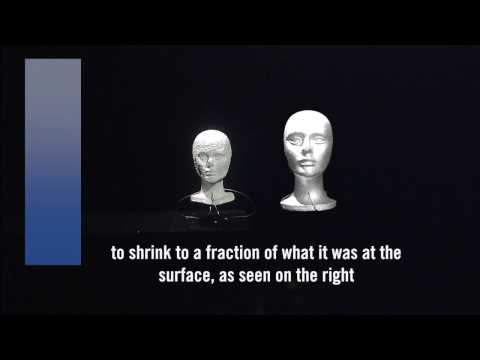To illustrate the effect of water pressure on air spaces in the deep sea, a styrofoam head was carried by a submarine, from the surface down into the ocean to 3,000 meters (9,840 feet). Water pressure increases with depth, compressing the tiny air pockets in the styrofoam, and causing the head to shrink. At a depth of 3,000 meters, the pressure is 300 times that on the surface, and presses about 4,400 pounds on every square inch of the head. It would feel like having a 4,400-pound adult hippopotamus sitting on your thumb!
Because water is less compressible than air, deep-sea animals often have hydrostatic skeletons (skeletons that are supported by fluid pressure) and lack air spaces in their bodies. Deep-diving mammals, such as elephant seals, have adapted to the immense pressure in the deep waters where they hunt, by having collapsible lungs that press out all the air as they are diving down to depths of up to 2,000 meters!
Video producer: Linda Kuhnz






















